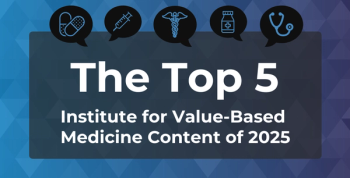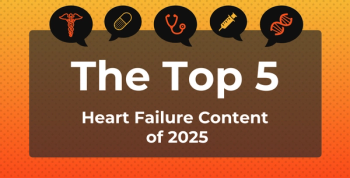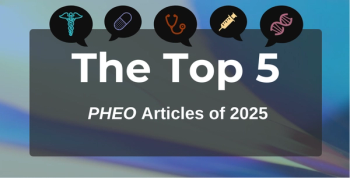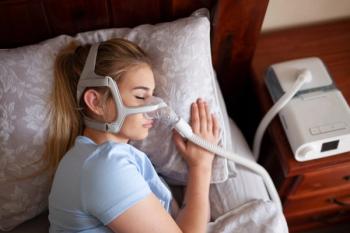
Guidelines for Bronchiectasis Highlight Multiple Treatment Methods
A session held during the CHEST 2025 Annual Meeting focused on the North American guidelines for treating bronchiectasis.
What Are the Key Recommendations in the New North American Bronchiectasis Guidelines?
The bronchiectasis guidelines presented during the panel held at CHEST mark the first North American guidelines set to be approved by CHEST for use in treating bronchiectasis. Currently, bronchiectasis guidelines for English-speaking countries exist from the European Respiratory Society, the British Thoracic Society, and Australia/New Zealand. These guidelines were formulated starting in 2023, with trials through 2025 considered for the final recommendations.
Ashwin Basavaraj, MD, FCCP, director of Education for Bronchiectasis and Non-Tuberculous Mycobacteria in the Division of Pulmonary, Critical Care & Sleep Medicine at NYU Langone Health, introduced the audience to the guidelines, with his familiarity with the guidelines coming from serving among 17 panelists that formulated these guidelines, which included pulmonologists and infectious disease specialists. Although they were being presented at this session, Basavaraj emphasized that they are not final.
“There may be some slight change in the wording, but the recommendations in [and] of itself will remain the same,” explained Basavaraj.
Basavaraj reviewed the guidelines, which were structured around PICO (Patient, Intervention, Comparison, Outcome) questions to guide physicians through various clinical scenarios. Targeted antibodies were recommended for the management of acute exacerbations of bronchiectasis with a very low certainty of evidence and in conditional scenarios.
“Although there was limited data in this area, the panel felt strong enough based on expert opinion that we should guide the choice of antibiotics based on prior or recent sputum culture results when we’re choosing antibiotics in acute exacerbations of bronchiectasis,” he said.
The duration of using these antibiotic therapies will depend on clinical response, with the guidelines suggesting either 10 or more days or less than 10 days based on response with very low certainty of evidence due to different findings in different studies on the efficacy of long vs short duration. Eradication therapy garnered no specific recommendation for patients with bronchiectasis and a first isolate of Pseudomonas aeruginosa.
Recommendations that had low-certainty evidence included the recommendation of long-term inhaled antibiotic therapy in patients with bronchiectasis experiencing frequent exacerbations of 2 or more per year compared with no treatment at all.
Long-term therapies of macrolide antibiotic therapy and brensocatib therapy were recommended for adults with 2 or more exacerbations per year with moderate certainty evidence. On the flip side, the guidelines conditionally recommend against the long-term use of atorvastatin therapy in these patients. The brensocatib recommendation in particular used data released in 2025 to confirm the recommendation.2
“Because the phase 2 and phase 3 data with brensocatib [were] published in time before the guidelines were published, they fit the methodologic criteria to be included into the guidelines for publication,” explained Basavaraj.
Tranexamic acid was conditionally recommended for patients with bronchiectasis and hemoptysis. Breathing techniques, positive expiratory pressure (PEP), high-frequency chest wall oscillation, and hypertonic saline were all conditionally recommended for use in airway clearance, though Basavaraj noted that PEP may be changed to oscillating PEP devices when the guidelines are officially published. Human deoxyribonuclease was conditionally recommended against for this use.
The last recommendation stated that surgical resection could be conditionally considered in appropriate candidates who have both bronchiectasis and localized disease with refractory symptoms despite medical management.
“There [were] a number of cohorts used to make this recommendation, including a UK cohort involving close to 400 patients showing elective resection specifically bronchiectasis-specific mortality, a Japanese study showing improvement in culture conversion in those with bronchiectasis and [nontuberculous mycobacteria], and a Turkish study also showing an improvement in hemoptysis with the low mortality rate from the surgical intervention,” concluded Basavaraj.
How to Apply the New Bronchiectasis Guidelines to a Patient Case Study
Anne O’Donnell, MD, division chief of pulmonary medicine, critical care, and sleep medicine at Georgetown University and a fellow member of the panel that created the guidelines, outlined the ways that the new guidelines can be used to identify the method of treatment for an individual with bronchiectasis.
“Just a reminder that we’re looking at treatment with these guidelines. We’re not looking at a total evaluation of the patient like some of our other guidelines have, so I think that’s important to remember,” she noted as she began her presentation.
A case study she presented was a woman aged 55 years with years of chronic productive cough, occasional wheezing and low-grade hemoptysis, empiric courses of antibiotics, and allergies to multiple antibiotics. The patient was diagnosed with asthma because she never had imaging.
O’Donnell went over how each PICO could help determine what the treatment method should be for the patient. The first conditional recommendation is to target microbiology to pick an antibiotic, which helped in figuring out she had pseudomonas in her sputum. The guidelines recommend considering eradication therapy for patients who have had pseudomonas for years. The recommendation of inhaled antibiotics is also worth considering due to being a frequent exacerbator.
Anti-inflammatories like macrolide therapy and brensocatib, along with hypertonic saline, breathing saline, and oscillatory PEP, could be considered here, but O’Donnell noted that atorvastatin, human deoxyribonuclease, and tranexamic acid would likely not be beneficial. The guidelines also help to point toward surgery due to her focal disease and recurrent infections.
“The other thing I want to stress is this is not like you do the PICO 1 first and you go down. It’s not a structured recommendation about how to approach your patient. You’re still going to want to do the basic kind of treatments and then add on… I think that’s obviously clinical decision-making with help from this,” O’Donnell concluded. She also emphasized that using guidelines from other areas is still important for a holistic view of each patient.
The new North American guidelines for bronchiectasis provide a baseline for doctors under its jurisdiction to use to treat their patients going forward. The outlining of the guidelines with practical application can help doctors identify the best course of action for their patients with bronchiectasis when properly diagnosed.
Although these guidelines are preliminary thus far, the final guidelines are set to be published by CHEST in the near future to be used by doctors across North America and the world.
References
1. McCormick B. Brensocatib becomes first FDA-approved therapy for bronchiectasis. AJMC®. August 12, 2025. Accessed October 20, 2025.
2. Chalmers JD, Burgel PR, Daley CL, et al. Phase 3 trial of the DPP-1 inhibitor brensocatib in bronchiectasis. N Engl J Med. 2025;392:1569-1581. doi:10.1056/NEJMoa2411664
Newsletter
Stay ahead of policy, cost, and value—subscribe to AJMC for expert insights at the intersection of clinical care and health economics.







































